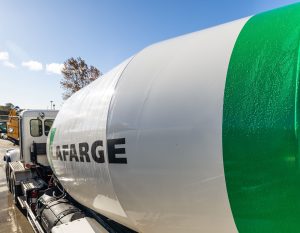CALGARY – A shift in global oil markets sentiment is underway, replacing decades of scarcity fears with confidence in surpluses, capping oil prices and forcing changes in the way the industry works, observers say.
"We’re moving from a mindset where oil was considered a scarce resource to one now where it’s more of a plentiful resource," said Steve Reynish, executive vice-president of strategy and corporate development at Suncor Energy Inc., speaking at a conference in Calgary last week.
"What we’re seeing is a huge reorganization worldwide and it’s all about how can we compete in a more plentiful world and that really takes us to competitiveness, cost-cutting, capital discipline."
Reynish said Canada has fallen behind the U.S. in pipeline and major resource project construction and needs to rework regulatory, political and environmental priorities. As an example, he reiterated a call by Suncor CEO Steve Williams last year to update Alberta conservation rules to allow oilsands producers to leave the most costly and carbon-intensive portions of a resource untapped.
The world’s current oil oversupply has been largely driven by U.S. shale oil and gas plays, Reynish said. According to the U.S. Energy Information Administration, Canada’s largest energy customer has boosted domestic oil production from less than four million barrels per day (bpd) in 2008 to 9.2 million bpd now, while gas output has risen from 67 million cubic feet per day (cf/d) to 89 million cf/d.
The production surplus that put oil prices in a funk starting in mid-2014 has pushed potential investors to the sidelines, experts say.
Energy analyst Nick Lupick of AltaCorp Capital said the recent stability in benchmark U.S. West Texas Intermediate prices has encouraged some investors to put oil and gas stocks back in their portfolios again but the market is "skittish" and could easily be derailed by volatility in oil prices. Most funds remain below market weighting in oil and gas securities, he said.
"Between US$50 and $53 WTI (per barrel) is perfect," he said in an interview.
"If we can sit there for the rest of the year, fundamentals are showing better, buying will likely continue, and the weightings will come up. What we don’t want to see is volatility."
Oilsands production is expected to rise early next year as Suncor’s Fort Hills mine adds 194,000 bpd and Canadian Natural Resources Ltd. brings on its 80,000-bpd Horizon mine expansion.
Lupick said there’s plenty of demand in the world for that heavy oil but a lack of pipeline space means higher-priced railway cars will have to be employed to bring new barrels to market in the short term.
Adam Waterous, who left Scotiabank to start investment firm Waterous Energy Fund early this year, said he remains convinced that this is the perfect time to invest in oil and gas after four decades of "lousy" six to eight per cent returns from the sector.
He said the "age of scarcity" began with the Arab oil embargo on the U.S. in 1973 and has ever since prompted poorly considered energy projects in Canada based on overly optimistic commodity price forecasts.
"Optimism is the enemy of the investor," he said. "I’m a buyer right now. I love negative headlines."
The Waterous fund was created with the goal to invest $200 million to $400-million in oil and gas companies — it bought two-thirds of the shares in Northern Blizzard Resources (since renamed Cona Resources Ltd.) earlier this year for about $244 million.
Suncor will be one of the first major Canadian oil and gas companies to report its third-quarter financial results on Oct. 25.
Analysts say few surprises are expected as companies continue to sacrifice growth in favour of conservative budgets that keep spending to less than cash flow (the difference between revenue and expenses).
Companies with refinery assets such as Suncor, Imperial Oil Ltd., Husky Energy Inc. and Cenovus Energy Inc. are expected to do well as refinery profit margins rose when competing Gulf Coast refineries were closed due to flooding caused by hurricane Harvey.
However, a U.S. six-cent gain in the average value of the Canadian dollar in the third quarter compared with the second is expected to hurt producers’ realized oil and gas prices, dampening third-quarter profits.











Recent Comments
comments for this post are closed